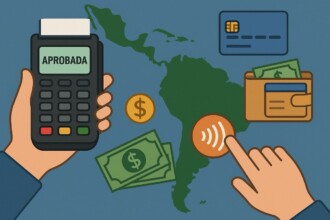If treated wisely, crypto can be a great tool for financial education. Although this aspect is not widely discussed, the educational value of crypto may be even more promising than its financial utility

Image: unsplash.com
While financial experts and business representatives argue about the monetary value of cryptocurrencies or lack thereof, educators are finding ways to employ crypto in their curriculums.
We’ll leave the debates on the viability of crypto transactions for the financial world, and take a look at another crypto use case. If treated wisely, cryptocurrencies can be a great tool for financial education.
Although this aspect of crypto is not widely discussed, the educational value of crypto may be even more promising than its financial utility. Here are some of the possible applications for crypto in the classroom.
Crypto-related classes
One of the most obvious implementations of crypto in the educational process is raising awareness about the blockchain and cryptocurrencies themselves. As a rising segment of financial assets, it deserves proper mention in learning how economies and money work.
Lack of understanding is one of the major reasons why people are reluctant to use innovative financial instruments such as crypto. Therefore, over two-thirds of US parents and college graduates with basic crypto understanding believe that crypto should be part of the mandatory education curriculum.
Moreover, currently, the blockchain industry lacks qualified talent because many are simply not educated about the concept. Expansion of blockchain education in schools would be critical in preparation for an ongoing shift in the global economy.
Some institutions are already adding crypto education to the list of their classes. For instance, Texas A&M has recently become the latest U.S. college to offer a Bitcoin course to some of its 74,000+ students.
Typically, similar programs introduce blockchain and financial technology, and how they affect various industries. Leading universities such as MIT, Cornell, Harvard, Oxford, Princeton, University of California-Berkeley, National University of Singapore, University of Nicosia, University of Connecticut, Arizona State University, etc. are offering online courses dedicated to Bitcoin and underlying technologies.
The private sector doesn’t stay aside either. Thus, Jay-Z and Jack Dorsey recently launched “The Bitcoin Academy,” with dedicated classes for children aged 5 to 17, residents of Marcy Houses in Brooklyn, New York, where Jay-Z grew up.
The crypto exchange Binance also has an educational platform Binance Academy with dozens of tutorials, self-study materials and interactive educational projects with dynamic rewards.
Web3 Lessons are future of crypto education
Currently, the perception of crypto as gambling or a high-risk investment prevents practical lessons on the cryptocurrency and NFT token use. At the same time, seven and nine-year-olds are already entering the Metaverse worlds of Roblox or Fortnite. Moreover, many children own digital assets and are making revenue in the NFT-enabled creator economy.
The problem is, children successfully spend their pocket money on these games, without understanding what a blockchain is. Since metaverse-like experiences are expected to become more and more popular, considering huge investments in the sector, education on how to manage the financial tools, safety mechanisms, and digital identity that underpin them is crucial but scarce.
Nevertheless, Web3 educational initiatives aimed at children do exist. For instance, a popular platform Class Dojo is already used by 50 million students around the globe. Children there receive virtual rewards, studying in a hybrid online/offline mode.
The virtual environment offers teachers feedback and lesson planning tools, while parents can communicate and receive updates on their children’s progress at school.
Since the pandemic started, many teachers and students have faced challenges of quality online education. If schools could hold remote classes in the metaverse, students would feel more connected to the teacher and more engaged.
Such classes would offer numerous other benefits. Thus, their digital academic information can be safely stored on blockchain. In addition, students can learn from anywhere even if a school is geographically distant. Besides, the cost of learning on Web3 platforms can be more affordable than traditional higher education.
Along with the virtual school environment, US colleges and universities are planning to roll out digital twin campuses in order to provide metaverse learning options for students. There are also emerging DAOs for educators that bring teachers to the world of Web3.

Image: pexels.com
Crypto can increase financial literacy
The lack of financial education leads to increasing debt levels among the youth. Cryptocurrencies can help democratize and demystify finances even for those having no access to traditional banking.
When using traditional assets, learning the ropes of saving and investment in practice is often costly. Although many banking apps for kids now offer simulation experiences that boost financial literacy, the challenge with financial literacy for the crypto generation is that traditional lessons don’t teach kids to navigate in the modern decentralised financial system.
Participants of the crypto community actively make money and build wealth, accepting and mitigating some risk levels, all without government participation. This experiential learning may also bring significant money losses, if taken recklessly, but at the same time even minor crypto investors get access to the world of trading, previously open only for the wolves of Wall Street.
Managing crypto is not easy. Yet it gives basic understanding of how value is created and stored, how the financial ecosystem participants maintain the transparency and trustworthiness of money transfers, etc. Moreover, crypto traders are actively involved in their financial decisions and experiencing real-world outcomes, which makes them learn faster.
Use cases
There are already some simulation games teaching the complex concept of blockchain in a gamified mode. For instance, Bloxxgame project enables students to learn the consensus algorithm by checking transactions and blocks. The Blockchain Game is another hands-on exercise that explains blockchain’s core principles and its real-world applications.
Cryptocurrency projects like Banano (BAN) provide intuitive tools, workshops and guides for kids in an understandable way so that financial experience and massive computing power is not required.
With the program Banano in the Classroom, teachers use blockchain technology to teach children financial literacy and application skills, problem-solving skills, as well as individual and group accountability through crypto and rewards.
The crypto rewards system introduces kids to the financial education concepts of earning, saving, and spending. The schoolchildren using this program may exchange their BAN tokens for real-life items and experiences like pizza, extra time to play outside, games, toys, school supplies, computer time, and much more.









